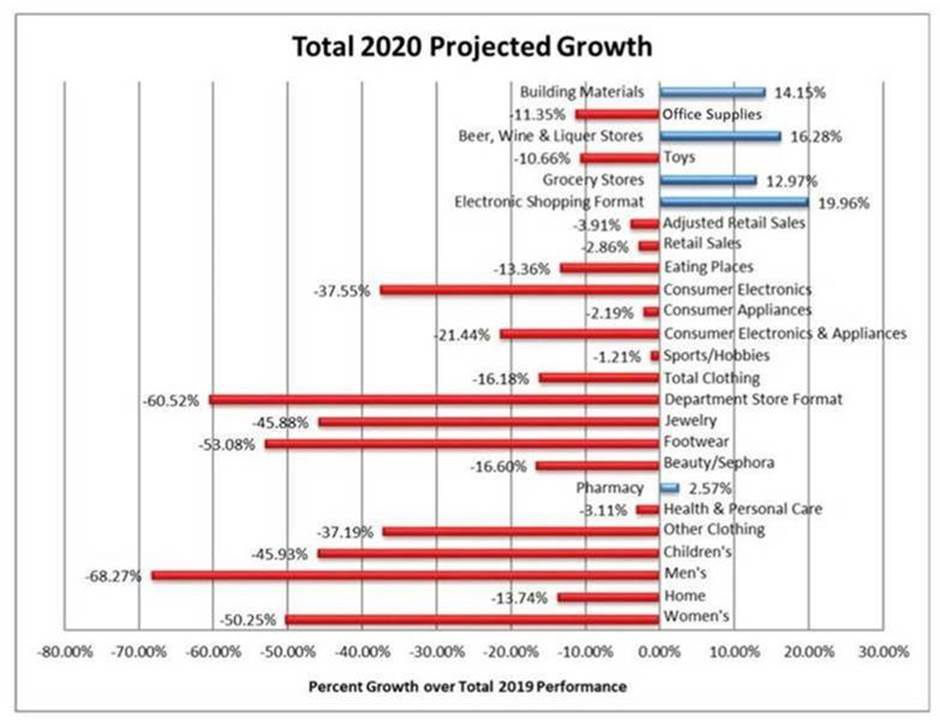When the pandemic moved everyone indoors, it moved all of the customers indoors with it. While most physical businesses struggled to survive, many eCommerce markets saw unprecedented booms.
As the first year of this pandemic comes to a close and the dust begins to settle, we can catch our breath and begin to review the impact. How did the pandemic change eCommerce, and what does it mean for the future of online retail?
COVID-19 Impact On Ecommerce By The Numbers
Buyers were increasing their online spending long before a global pandemic forced them into it. But the events of this past year took that steady growth
and catapulted it into a frenzy of online shopping. A recent report showed that the COVID-19 pandemic accelerated the shift to eCommerce by up to 5 years.
Here’s a breakdown of the numbers:
- In Q1 2020, department store sales and those from other “non-essential” retailers declined by 25%.
- This grew to a 75% decline in the second quarter.
- Department stores are expected to decline by over 60% for the full year.
- Meanwhile, e-commerce is projected to grow by nearly 20% in 2020.
- U.S. retail e-commerce reached $211.5 billion, up 31.8% from the first quarter, and 44.5% year-over-year.
- E-commerce also accounted for 16.1% of total retail sales in Q2, up from 11.8% in the first quarter of 2020.
Meaning, $1 in every $5 spent came from orders placed on the web during the April-June period.
Source: digitalcommerce360
Ecommerce Stores For Brick & Mortar Retailers
There was no way to predict what happened in 2020, but nonetheless, those who were prepared with a functional and user-friendly eCommerce store were in a better position to thrive than those without one. If you’re still on the fence about whether your business needs an online presence, living through this past year should have shown the importance of it.
Online retailers have been a threat to physical ones for years, but never the way they are now. We are in unchartered territory when it comes to in-person shopping. For now, resources are better spent turning your brick & mortar shop into an eCommerce store.
What Are People Buying?
If your eCommerce store is not seeing the same spike in sales as others it could simply be the product. You might need to diversify your offerings to boost your sales.

It likely comes as no surprise to see the spike in grocery sales, but the increase in home important and building materials (stemming from the boom in home demands) was unexpected. In the midst of skyrocketing unemployment numbers, items that felt frivolous, such as jewelry or toys, dropped.
In short, only a few categories reaped the majority of the benefits from this period of eCommerce growth.
How Can Your Business Adapt?
The pandemic changed how people buy, now you need to change how you sell.
Not sure where to start? Consider these tips to adapt your eCommerce or physical retail business to a post-COVID market:
- Get creative with your inventory by selling in-demand products that aren’t related to your direct market. For example, many office supply sites did a fantastic job of this by pivoting to feature PPE and cleaning supplies as other retailers sold out of them
- Replace sensory marketing techniques with digital marketing tools such as video production and SEO to set your eCommerce site apart.
- It’s hard not seeing customers face to face if you’re not used to it, but you can always connect to your community through social media marketing.
The bad news? Everyone is online. Also the good news? Because everyone is online you have immediate access to an always connected, always present customer base.
We can help you turn the issues created by COVID-19 into opportunities.




